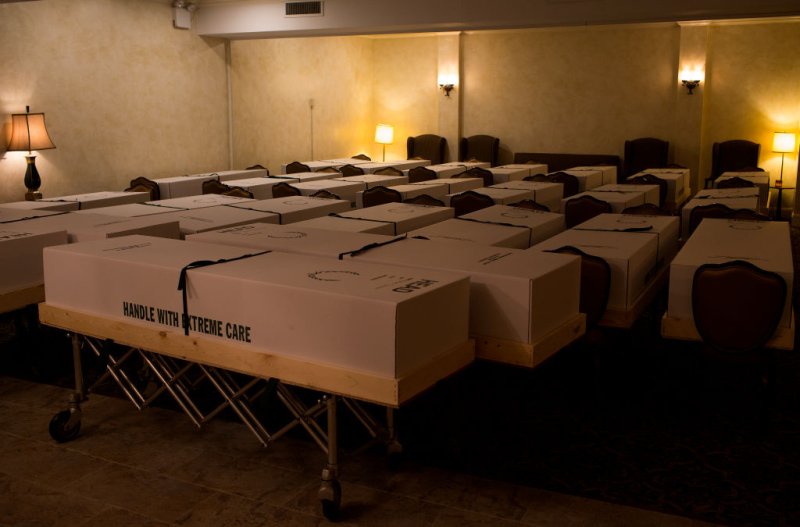From Time
The Difficulty Of Counting the COVID-19 Pandemic’s Full Death Toll
by Markian Hawryluk
Sara Wittner had seemingly gotten her life back under control. After a December relapse in her battle with drug addiction, the 32-year-old completed a 30-day detox program and started taking a monthly injection to block her cravings for opioids. She was engaged to be married, working for a local health advocacy group in Colorado, and counseling others about drug addiction.
Then the COVID-19 pandemic hit.
The virus knocked down all the supports she had carefully built around her: no more in-person Narcotics Anonymous meetings, no talks over coffee with trusted friends or her addiction recovery sponsor. As the virus stressed hospitals and clinics, her next appointment for a monthly shot of medication was pushed back from 30 days to 45 days.
As best her family could reconstruct from the messages on her phone, Wittner started using again on April 12, Easter Sunday, more than a week after her original appointment when she should have gotten her next injection. She couldn’t stave off the cravings any longer as she waited for her appointment that coming Friday. She used again that Tuesday and Wednesday.
“We kind of know her thought process was that ‘I can make it. I’ll go get my shot tomorrow,’” says her father, Leon Wittner. “‘I’ve just got to get through this one more day and then I’ll be OK.’”
But on that Thursday morning, the day before her appointment, her sister Grace Sekera found her curled up in bed at her parents’ home in this Denver suburb, blood pooling on the right side of her body, foam on her lips, still clutching a syringe. Her father suspects she died of a fentanyl overdose. However, he says, what really killed her was the coronavirus.

“Anybody that is struggling with a substance abuse disorder, anybody that has an alcohol issue and anybody with mental health issues, all of a sudden, whatever safety nets they had for the most part are gone,” he says. “And those are people that are living right on the edge of that razor.”
Sara Wittner’s death is just one example of how complicated it is to track the full impact of the coronavirus pandemic—and even to identify what should be counted. Some people who get COVID-19 die of COVID-19. Some people who get COVID die of something else. And then there are people who die because of disruptions created by the pandemic.
While public health officials are trying to gather data on how many people test positive for the coronavirus and how many people die from the infection, the pandemic has left an untold number dying in the shadows, not directly because of the virus but still because of it. They are unaccounted for in the official tally, which, as of June 21, has topped 119,000 in the U.S.
But the lack of immediate clarity on the numbers of people actually dying from COVID-19 has some onlookers, ranging from conspiracy theorists on Twitter all the way to President Donald Trump, claiming the tallies are exaggerated even before they include deaths like Wittner’s. That has undermined confidence in the accuracy of the death toll and made it harder for public health officials to implement infection prevention measures.
Yet experts are certain that a lack of widespread testing, variations in how cause of death is recorded, and the virus’ economic and social disruption are hiding the full extent of the pandemic’s death toll.
How To Count Coronavirus Deaths
In the U.S., COVID-19 is a “notifiable disease”—doctors, coroners, hospitals and nursing homes must report when encountering someone who tests positive for the infection, and when a person who is known to have the virus dies. That provides a nearly real-time surveillance system for health officials to gauge where and to what extent outbreaks are happening. But it’s a system designed for speed over accuracy; it will invariably include deaths not caused by the virus as well as miss deaths that were.
For example, a person diagnosed with COVID-19 who dies in a car accident could be included in the data. But someone with COVID-19 who dies at home might be missed if they were never tested. Nonetheless, the numbers are close enough to serve as an early warning system.
“They’re really meant to be simple,” says Colorado state epidemiologist Dr. Rachel Herlihy. “They apply these black-and-white criteria to often gray situations. But they are a way for us to systematically collect this data in a simple and rapid fashion.”
For that reason, she says, the numbers don’t always align with death certificate data, which takes much more time to review and classify. And even those can be subjective. Death certificates are usually completed by a doctor who was treating that person at the time of death or, by medical examiners or coroners when patients die outside of a health care facility. Centers for Disease Control and Prevention guidelines allow for doctors to attribute a death to a “presumed” or “probable” COVID infection in the absence of a positive test if the patient’s symptoms or circumstances warrant it. Those completing the forms apply their individual medical judgment, though, which can lead to variations from state to state or even county to county in whether a death is attributed to COVID-19.
Continue to full article.
